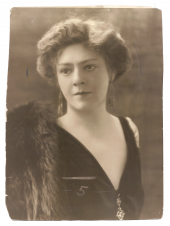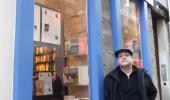`Museum Hours': Using old paintings to find new meanings
1. Where’s the bathroom?
2. How much is that painting worth?
Those are the top two questions most often asked of Johann, a veteran guard at
His younger days were spent traveling with rock bands, where he had more than his share of noise. Now he has more than his share of silence, especially in the museum’s Brueghel room, his favorite. It holds the world’s finest collection---a third of only three dozen surviving canvases---of Flemish Renaissance master Pieter Bruegel (1525-1569). Johann (Robert Sommer) thought he knew every painting thoroughly but just noticed for the first time, in one of them, a frying pan sticking out of a peasant’s hat. Which led him to start counting the number of paintings with eggs...
An art museum guard has a lot of time on his hands, and noticing details---outside as well as inside the museum---is what Johann does best: a glove in the snow, bric-a-brac getting rained on at a sidewalk flea market. You never know which objects might survive to become [italic] objets [unital] in the future.
You never know which people might survive, either. He watches them “watch” the paintings and notices Anne (Mary Margaret O’Hara), a Canadian visitor summoned to
You’ll find no more contemplative film exercise than indie director Jem Cohen’s “Museum Hours,” a two-character affair in which soft-spoken Johann is the perfect narrator and disheveled Anne sings soft ballads to a loved one who can’t hear her.
Its highlight, oddly enough, is a Bruegel lecture by a tour guide (Austrian actress Ela Piplits), describing his paintings as far more radical than they might seem today. His depictions were neither “judgmental nor sentimental, nor do they touch,” she says in a terrific explication of the “
Another great Bruegel painting---“The Way to
People in Bruegel paintings show little concern for victims, human or divine. His scenarios are so complex and minutely detailed, one can only grasp sections of them at a time. Their truth lies more in what's hidden than what’s revealed. I wish Bruegel could look down via the cosmic Internet and see how much they are belatedly appreciated. On the other hand, maybe he doesn’t really need earthly approval and validation any more.
In any case, Bruegel’s “main” subject is often hard to find. Ditto Jem Cohen’s. “Museum Hours” is not really about the hospital story but about observation of the world, and Johann is a people-observer par excellence: He speaks of the adolescents dragged by their teachers to the museum, competing with each other to be bored and sending text messages; and of the "Marxist punk" there, who ridiculed the whole idea of museums as “all about money,” the still-lifes of the masters being equivalent to piles of Rolex watches today.
Director Cohen’s past work includes “Gravity Hill Newsreels,” a documentary of the Occupy Wall Street movement. He favors “Hello, dolly!” cinematography---lots of corrridor-dollying shots, a la “Last Year at Marienbad” (my least favorite film). The wintry
Forget about any (expected) love story. This is more essay than movie, and the characters are less flesh and blood than disembodied voices giving shape to didactic ideas---to the melding, not the separation, of what’s inside and outside the museum. These “Museum Hours” are long---at 106 minutes, not for the impatient, and super-serious to the point of humorless, full of melancholy time and timelessness.
I can’t help thinking of Proust, and letting him sum it up: "The real voyage of discovery lies in not seeing new landscapes but in having new eyes."
(In English and German, with subtitles.)






